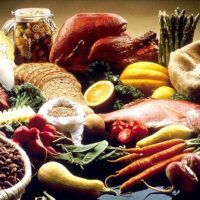The Gluten Thing: Fad or Fact, Part 2
How do you know if you have a gluten issue?
It’s possible that you may eat foods containing gluten and not experience any significant digestive issues. However, if you have any of the symptoms that were listed last week, it’s possible that gluten is at the root of the problem.
To know for certain, you could do an at-home gluten sensitivity test. While there are numerous ways of getting tested, the best seems to be a combination of stool and saliva testing through a company called EnteroLab (www.enterolab.com).
I can hear you hollering “NO WAY!” about a stool test. If you feel bad enough…
The tricky part is deciphering the gene information once you have it. You can get assistance from someone at the lab, or work with a functional or integrative medical practitioner who understands that language. 
Another way to determine if gluten is the culprit is to completely avoid it and see how you feel. If your symptoms improve, then you don’t need to bother with a test unless you’d like to know exactly which gene(s) you have that may also affect your children.
What other foods contain gluten?
The obvious: breads, pastas, baked goods, crackers, and anything with the gluten grains added.
The list of foods that often contain gluten is fairly lengthy and unbelievable. Here are some of them:
- Beer, wine coolers, various alcohols
- Condiments, salad dressings, marinades
- Soups, bouillons, broths (commercially prepared)
- Gravy
- Communion wafers
- Energy bars
- Cereals
- Hot dogs, cold cuts, blue cheeses
- Soy sauce and teriyaki sauces
- Wheatgrass
- Veggie burgers
- Oats (unless certified gluten-free, since they are often contaminated from wheat products)
This is not a complete list. It gives you an idea of the extent to which gluten has taken over our food supply. It really is everywhere!
In the book Grain Brain, Dr. Perlmutter explains that although our ancestors had similar genetic makeup, modern food manufacturing has allowed us to grow structurally modified grains that contain gluten that’s less tolerable than the gluten found in grains cultivated just a few decades ago.
In simple terms, we are now eating gluten on steroids.
For Seinfeld Fans
Do you remember the episode where George’s fiancé, Susan, had to lick all the wedding invitation envelopes? They were supposedly made with low quality, poisonous glue, and she died.
Perhaps she had an extreme gluten issue. Non-adhesive stamps and envelopes may contain GLUTEN!
I’m not even kidding.
SOOOO, what CAN you eat?
These grains and starches are gluten-free: amaranth, arrowroot, buckwheat (there’s no wheat in it, honest), corn, millet, potato, quinoa, rice, sorghum, soy (although I’m not a fan), tapioca, teff 
A few more ideas: eggs and other protein (wild fish, meat, poultry, pork), healthy fats (nuts and nut butters, avocados, cheeses, extra-virgin olive oil, coconut oil), fruits and vegetables.
Be sure to read anything with a label. Many of them now state: contains wheat.
Next week I’ll fill you in on some other ingredients that are code for gluten and share some of my tips to help you.
In the meantime, beware of those wicked stamps and envelopes.
Much love,
Carol
“Yet an estimated 99 percent of people who have a problem with eating gluten don’t even know it. They ascribe their ill health or symptoms to something else — not gluten sensitivity, which is 100 percent curable.” — Mark Hyman


